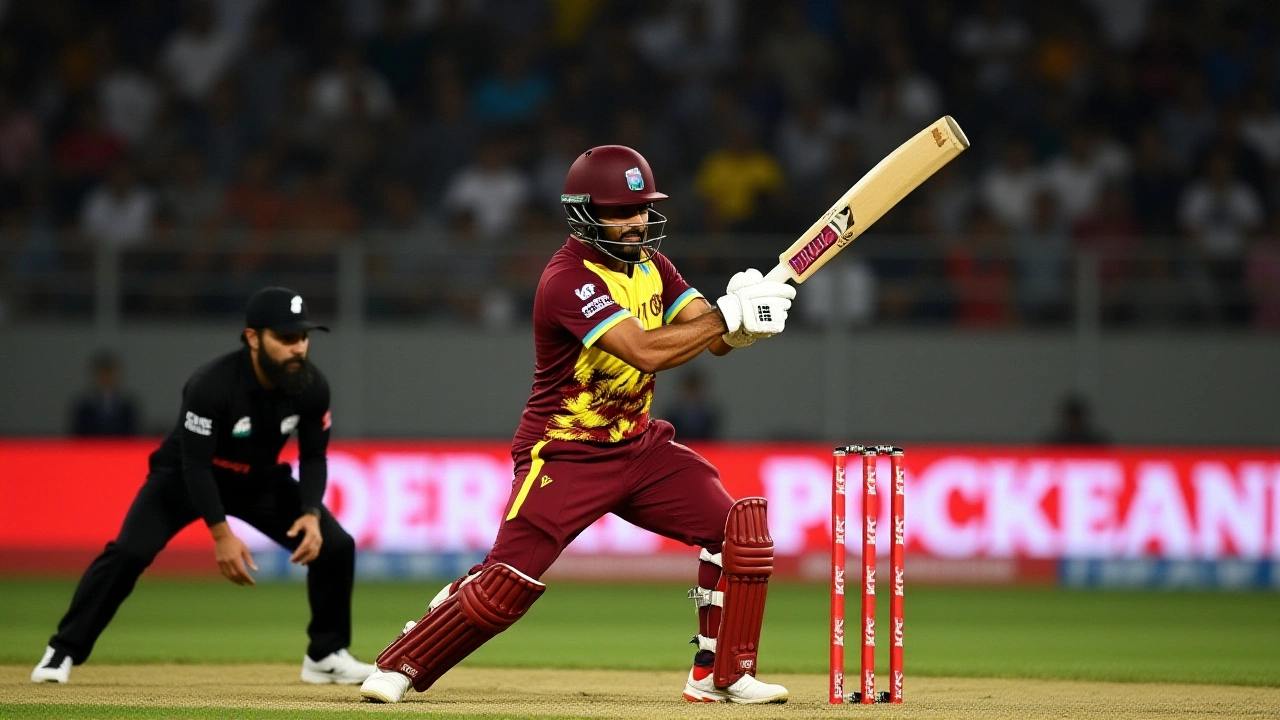When Shai Hope and John Campbell walked out to bat on Day 3 of the second Test at Feroz Shah Kotla Stadium in New Delhi, West Indies were in freefall — 25/1 after 10 overs, trailing by 270 runs, and staring at an innings defeat. By stumps, they’d turned the tide. Their 138-run partnership, built on patience, precision, and pure grit, had slashed India’s lead to just 97 runs. It wasn’t just a rescue. It was a reckoning.
A Follow-On That Didn’t Break Them
India enforced the follow-on — a rare move in modern Test cricket, and the first time since 2010 against Australia. After bowling West Indies out for 248 in their first innings, India had piled up 518/5 declared, anchored by Shubman Gill’s 102. With Kuldeep Yadav taking 5/45 — the first Indian spinner to do so against West Indies in India since 2011 — the writing seemed clear: another collapse, another win. But cricket, as always, has a way of rewriting scripts.West Indies lost opener Tagenarine Chanderpaul for a duck and Alick Athanaze for 18 in quick succession. At 35/2, the innings looked doomed. Then came Hope and Campbell. Two men with something to prove. Hope, 31, hadn’t scored a Test fifty since November 2023. Campbell, 32, had been a quiet presence in a team drowning in inconsistency. Now, they were the anchors.
The Art of Surviving the Spin
The pitch, once lively with turn, had slowed. And the two batsmen knew it. They didn’t try to dominate Ravindra Jadeja or Washington Sundar. They absorbed. They waited. They punished only the loose ones.One moment stood out: Jadeja, flighting a full delivery around off, Campbell drilled it to short covers — only for the umpire to call a no-ball. The crowd groaned. Campbell just smiled. He didn’t need the runs. He needed time. Another over, Hope faced a tossed-up delivery from Jadeja. It gripped, turned, bounced. He missed. The next ball? Quicker, fuller, on off. He cracked it through covers for four. No celebration. Just a nod. That’s the kind of concentration that turns matches.
Even Jasprit Bumrah, the most lethal seamer on the planet, couldn’t find a way through. His line was tight, his pace lethal, but Campbell and Hope didn’t give him room to breathe. Bumrah bowled 14 overs, conceded just 42 runs. Economical? Yes. Effective? Not enough.
A Partnership That Changed the Series
This wasn’t just the highest partnership for West Indies in 2025. It was the first century stand in any Test this year for them. It came after a series where they’d lost three of four innings by 200+ runs. Now, they were within 98 runs of erasing India’s lead. West Indies Cricket Board’s leadership had been under fire. The players? They were answering in the only language that matters: runs.“For the first time in the series, West Indies have left India searching for answers,” NDTV Sports reported. And it’s true. India’s spinners, who had dominated the first innings, were now being read like open books. Campbell’s 82* came off 187 balls. Hope’s 57, off 142. They weren’t playing for beauty. They were playing to survive.

What’s Next? The Real Test Begins
Day 4 begins with West Indies needing 98 more runs to avoid an innings defeat. But the real question isn’t whether they’ll survive — it’s whether they can bat long enough to force a draw, or even steal a win. India, for their part, will need to break through. And fast. With only eight wickets left, the pressure shifts. Will Kuldeep Yadav find his rhythm again? Can Mohammed Siraj generate movement on a flatening track?The match is now a chess game. India has the material advantage — but West Indies have the momentum. And in Test cricket, momentum is often more dangerous than a 270-run lead.
Why This Matters Beyond the Scoreboard
This partnership isn’t just about runs. It’s about identity. West Indies cricket has spent years searching for its soul after the glory days of the 80s and 90s. Hope and Campbell — both products of a system that’s been starved of resources — are proving that resilience still exists. They didn’t have a 100,000-run academy behind them. Just grit, discipline, and the belief that they could still compete.For India, it’s a warning. Dominance isn’t enough. Complacency kills. You can’t assume a follow-on means victory. You have to fight for every wicket. Every over. Every ball.
The Board of Control for Cricket in India will be watching. So will every young cricketer in the Caribbean. This wasn’t just a day’s play. It was a statement.
Frequently Asked Questions
How did Hope and Campbell manage to survive India’s spin attack?
Hope and Campbell focused on patience, playing late and letting the ball come to them. They avoided sweeping against Jadeja and Sundar, instead using their feet to negate turn and driving only when the ball was full and straight. Their footwork and shot selection frustrated India’s spinners, who couldn’t find the edge or induce a mistake after the first hour.
Why was India’s decision to enforce the follow-on so unusual?
India last enforced the follow-on in 2010 against Australia in Delhi — 15 years ago. Since then, captains have preferred to bat again to build bigger leads. The decision in 2025 was risky, given the pitch’s slowing nature and the threat of bad light on Day 4. It backfired because West Indies’ batsmen adapted better than expected.
What does this mean for Shai Hope’s career?
Hope’s 57 was his first Test fifty in 31 innings and his first since November 2023. After averaging just 24.5 in his previous 15 Tests, this knock could be the turning point. He’s now the only West Indian with over 4,000 Test runs who’s still in the side — and this performance proves he’s still the team’s most reliable batsman.
Can West Indies still win this match?
Winning is unlikely, but a draw is very possible. If Hope and Campbell bat through Day 4, West Indies could reach 350+ in their second innings. That would leave India just 20 overs to chase 98 — a scenario where even India’s bowlers might struggle to force a result. The pitch is now flat, and time is running out.
How has the pitch changed from Day 1 to Day 3?
On Day 1, the pitch offered sharp turn and bounce, helping Kuldeep and Jadeja dominate. By Day 3, it had flattened significantly — slower, less grip, and less carry. Batsmen could play shots with more confidence, and even spinners found it harder to extract turn. This shift is what allowed Campbell and Hope to settle.
Who are the key players India must rely on for Day 4?
India will need Bumrah to strike early, possibly with the new ball, and Jadeja to find his rhythm again. Kuldeep, though tired after his 5-wicket haul, may be used in the middle overs if the ball softens. But the real key is field placement — India must cut off runs and force mistakes. One slip, one short leg, one extra cover — small adjustments could break the partnership.

